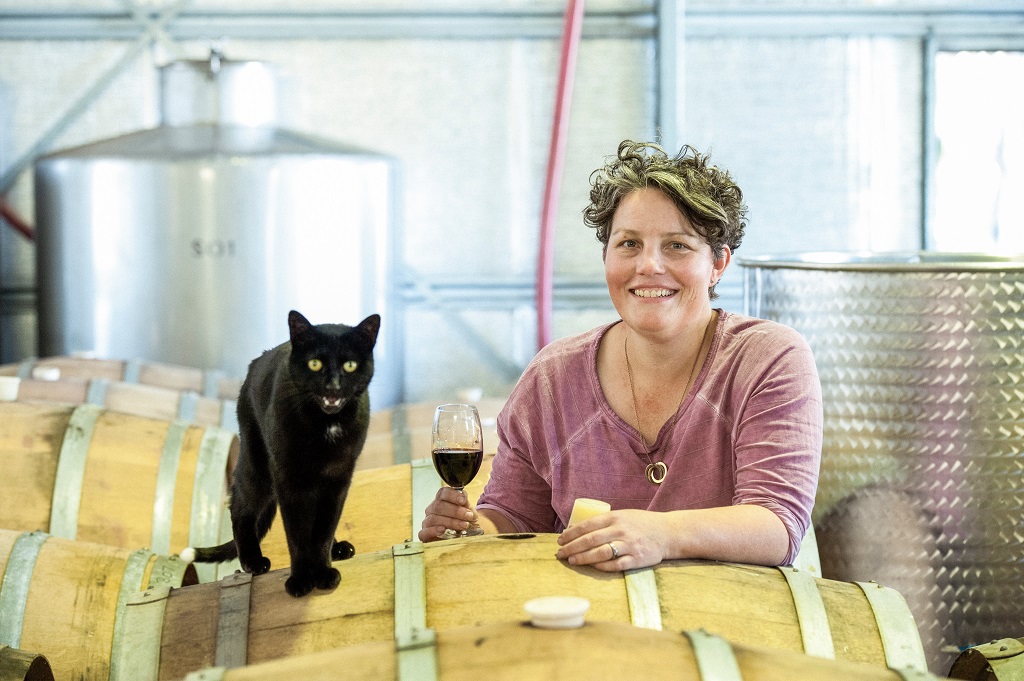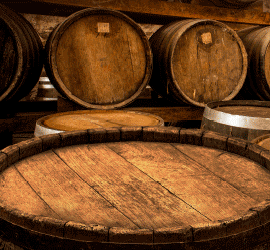Images courtesy Arthur Wines
Tash Arthur is plotting her own course through the wine industry by flagrantly ignoring trends and making wines that she wants to drink. Arthur is the embodiment of what makes Australian wine unique and provides an alternative voice to the medium bodied wine drum that is being beaten across the country. Harrison Davies spoke with her about her career and her label.
Medium bodied wines. Alternative varieties. Low-intervention, natural wines. These are the trends fuelling thousands of young winemakers across Australia. However, they are not was is fuelling Tash Arthur.
Arthur’s label, the aptly named Arthur Wines in Margaret River, is one of the only labels in the country that specialises in and exclusively makes fortified wines.
Running her winemaking operation out of her family’s cattle farm, Arthur Wines became a way for Arthur herself to make the wines she always enjoyed more than anything else.
Her flair for winemaking began during her tenure as a nurse, toward the beginning of her career. Weekly knockoffs soon became an all-encompassing passion for wine.
She soon found herself working vintages in Rutherglen and finding a taste for richer flavours.
“I worked for a few different wineries. I worked for Amberley here in Margaret River when that was still in operation. Then I went over to Rutherglen and worked for Chambers for a couple of years,” she said.
“I loved fortified so that was the obvious place to go to, to learn to make them. And then family reasons kind of brought me back to WA.”

They’re just the
absolute gems
and they’re very
undervalued. And I
thought, well, you
know I can just
have a little niche
and make the
wines that I love.
Tash Arthur
She found herself back in the West, working part time as a nurse and making wines with McHenry Honen and getting frustrated that she couldn’t make what she really wanted, fortifieds.
She eventually started tinkering in different styles of fortified and trying different varieties before breaking out on her own and starting Arthur Wines.
The label came into being as a way for her to focus solely on the style she loved and she hasn’t looked back since.
“There are so many different types of fortifieds, and especially if you do the Rutherglen wine show, the judging, people can’t wait for the fortified masterclass,” she said.
“They’re just the absolute gems and they’re very undervalued. And I thought, well, you know I can just have a little niche and make the wines that I love.
“I’m just experimenting with different styles. The biggest hurdle is getting people to not think of them as a Nana drink and making them a bit more hip and a bit more refreshing.”
Going her own way
Arthur prides herself on trying new things in a style that is defined by Australian winemaking from decades ago.
She said she is fascinated by making fortified wines with many different varieties and discovering new flavours.
She took inspiration from a vintage she worked in Portugal, where the ports they were making encompassed a wide range of flavours and textures.
She reflected on the ports she had made with white varieties in Portugal and how they influenced some of her winemaking back here in Australia.
“I’ve tried to make a style similar to [the white ports] more like an aperitif but not a sherry or an Aperol,” she said.
“I’ve made a pink fortified which is pretty unusual, and then a ruby, which is an easy drinking style, and I’ve tried to package it as something different.
“Being in Margaret River I’ve got to work with Chardonnay – a fantastic grape variety and it makes a beautiful white [fortified]. So I use Chardonnay and Chenin and sometimes Sauvignon Blanc because it’s so aromatic. It’s got some amazing flavours.

“I’ve just started getting into some Pedro from the Swan Valley. And we have a really great grower here in Margaret River who does Muscat.
“I’ve got growers that I’ve worked with for a number of years now and they’re very accommodating for someone who only buys small amounts at a time.
“I was looking for specific [varieties], I really wanted a Margaret River Muscat. So through a few contacts – everyone knows everyone in Margaret River – someone suggested I contact the grower that I use and they’ve been fantastic.
“They’re also a bass and sheep farmer as well as the vineyard. So we’ve got a lot in common.
“For other varieties, like the Pedro, I’ve had to look a little bit wider into the wine industry and see who knows who knows, who’s got what and where.”
Margaret River is home for Arthur and she said it was important that she make wines that were emblematic of her own home region.
She said the community was close and as a smaller producer it made it easier to source grapes and get help when she needed it.
“It’s a pretty tight-knit community,” Arthur said.
“The winemakers have a really good community and are great at sharing knowledge. In the wine industry, most people are willing to share their knowledge and have a chat.”
Part of the challenge for Arthur was to sell her fortifieds to a market that was gravitating toward them.
Without seven generations of winemaking behind her, she had to find a different way to get new consumers on board with her repertoire.
She created a series of unique labels for each bottle, alongside her brother-in-law, to bring her 20th century style into the modern era.
“So my brother-in-law is very talented graphic designer and he designed all of our labels and they’re funky and they look a bit different,” Arthur said.
“I can’t compete with seven generations of winemakers in Rutherglen with a surname, it’s just not going to happen.
“All of our labels are funky and they look a bit different and so people can take it to a party and go ‘check out this label, check out this wine’ and it’s not a boring bottle.
“We’ve just tried to make them look a bit smarter. We give people opportunities to know when to drink wines like ours and also how to drink them because people just haven’t been exposed to them.”
She said consumers have warmed to the idea of fortifieds but a general knowledge of what they are still needed to be taught – many thought they were drinking gin.

Raising a brand and a family
Arthur began the label alongside her husband, Robert, a farmer, over 10 years ago. Now with three kids, the label has become a part of the family.
“He pretty much runs the beef and sheep farm, whereas I pretty much run the winery. But we obviously help each other out with everything, but if it’s vintage, he’s in the winery, and if it’s shearing, I’m in the shed,” she said.
“It’s mainly just the two of us. We’ve got a group of people that we pull in for events, which are like our little family. And it’s great. We’ve got some really good people working with us and we’ve got three daughters who like to get involved.
“They’re six, eight and 10 at the moment and when it’s vintage, they’re over there and they’re shovelling grapes and washing up tanks and getting underfoot, but they love it.
“Hopefully, one of them might want to have a look at it in the future, and maybe continue on.”
While she has a lot of ambition for her label, she also acknowledged that making fortifieds is time consuming and said that she was interested in experimenting with more flavours and styles.
“With fortifieds everything takes a lot of time. It’s not like you can make that wine and turn it around within two years like a table red. So there’s a lot of planning for five to 10 years down the track,” she continued.
“We’ve got the Muscat Solera well and truly underway, we’ve got a Tawny Solera, the Pedro just started and the vintage Australian fortified is on its way.
“Eventually we’d like to get a bit of age on things in barrel before we release them.
“Just growing slowly at the moment, we don’t want to sell everything that we’ve got in the winery just yet. We want to let it get a bit of age and make a better product for our customers.”

This article was originally published in the ______ issue of the Australian & New Zealand Grapegrower & Winemaker. To find out more about our monthly magazine, or to subscribe, click here!





















